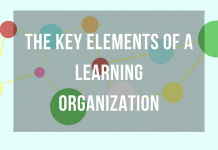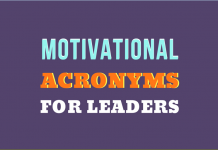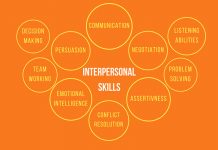The Grim Statistics about Organizational Change Management
In 2013, McKinsey estimated that 70% of organizational change programs fail. 
While this might as well be an urban legend (we have searched in vain for more up-to-date statistics on the matter), each one of us has at least one experience that supports this statistic (and for those who haven’t experienced a complete failure, the resistance to change and the roadblocks in front of the change process are nowhere near what can be qualified as sweet memories).
The Optimistic View on Organizational Change
But enough with the pessimistic, glass half-empty view of change projects. According to the same statistics, 30% of change management processes were successful.
This means that those implementing the change project were either extremely lucky, or they were doing something right, or the project was happening in an environment that allowed for such organizational change to happen (aka a learning organization).
Before diving deeper into why some organizations are more successful than others at managing change, let’s start with what change management is.
Change Management Definition
According to PROSCI, change management is the discipline that guides how we prepare, equip and support individuals to successfully adopt change in order to drive organizational success and outcomes.
Managing change is not easy, but managing change in a dysfunctional environment is similar to rolling Sisyphus boulder up the hill.

Resistance to change is high and whatever fancy change management model you may try to apply, it just doesn’t work.
Successful Change Management Happens in Learning Organizations
Organizational change is successful in an organization that understands the need for the change, is willing to undergo the process, is ready for the change, and has the right knowledge to perform the activities required by the change process.
This kind of organization is a learning organization.
Learning Organization Definition
Peter Senge defines a learning organization as an organization where people continually expand their capacity to create the results they truly desire, where new and expansive patterns of thinking are nurtured, where collective aspiration is set free, and where people are continually learning to see the whole together.
“A learning organization is a place where people are continually discovering how they create their reality. And how they can change it.”
– Peter Senge, The Fifth Discipline
Kotter’s 8 Steps Change Management Model, even though rather theoretical in some aspects, is a good model. The issue with that model is that he only talks about organizational culture only in the last step. We believe that the culture of an organization is the first determining factor for the success or the failure of a change program. An organizational culture is a complex system and it’s highly influenced by the interpersonal skills of its members and by the leadership skills of those at the top.
Kotter’s 8 Steps Change Management Model
1. Establish a sense of urgency
2. Create a guiding coalition
3. Develop a change vision
4. Communicate the change vision for buy-in
5. Empower broad base action
6. Generate short term wins
7. Never let up
8. Incorporate changes in the culture
The Parable of the Blind Men and the Elephant
An organizational culture designed around silos, where information is currency, where “turf wars” instead of common organizational interest is the norm, is not the kind of culture that you can encounter in a learning organization. This culture is closer, if we were to use a metaphor, to the situation of the 5 blind old men in the ancient parable about the 5 blind men and the elephant.
We will talk about learning organizations and we will use this parable as a metaphor for the learning process in complex organizations.
The Story of the Blind Men and the Elephant
Originated in India, this is an age old story of a group of blind men, who have never come across an elephant before, and who learn and conceptualize what the elephant is like by touching it. They described the elephant based on their partial experience and their descriptions are in complete disagreement with one another and with what an elephant is.
You remember it, don’t you?
In the modern version of the story the elephant became the company and the blind men are now the departments of the company, who, as the blind men of the original story, see the organization only from the perspective of their own activity.
Rather scary, don’t you think?
The opposite of this type of organization is the learning organization, a type of organization where information is shared, aggregated, broadly communicated and readily available (see Peter Senge’s definition above).
In a learning organization, system thinking is essential.
In a learning organization the individuals are intrinsically motivated to work on their personal development and grow. And they are willing to collaborate and help each other grow and make the organization a place where creativity and innovation flourish. They also know how to manage stress and keep the focus on searching for solutions.
System Thinking, Knowledge Management, Collaboration
Let’s imagine for a second how it will be to put in place a new business process, information system (or anything new that could bring a competitive advantage to the company) in such an environment.
In this type of organization, information flows from the individual to the team to the entire organization.
Knowledge exists not only in the head of the employees but it is also translated into a well-structured knowledge base of business processes.
Departments are aligned and they provide value and foster the success of the organization.
Now let’s look at some of the potential advantages of implementing change in such a context:
1. You have a clear view of your company’s business processes. No need to struggle to define the ‘as-is’ state during the business analysis phase of the implementation.
2. A clear view of the business processes and a high degree of alignment between the business strategy and the various departments allow for an easier mapping between the needs of the business and the internal capabilities, thus facilitating the transition from the ‘as-is’ state to the desired ‘to-be’
3. Last but not least, having the information in a well-structured and accessible form, helps improving the communication inside the organization. The project can only benefit from having everybody on the same page, and the benefits are not only in terms of outcome, but also from the point of view of team’s morale during the whole duration of the project.
While we all understand that this is an ideal situation, it would be interesting to learn how you are dealing with the imperfections of a not-so-ideal organization while implementing change in your own organization.
If you want to learn more:
21 Twittable Quotes about Change Management from John Kotter
Peter Senge – The Fifth Discipline: The Art & Practice of The Learning Organization
Peter Senge – The Fifth Discipline Fieldbook: Strategies and Tools for Building a Learning Organization
John Koter – Leading Change
John Kotter – Our Iceberg Is Melting: Changing and Succeeding Under Any Conditions










